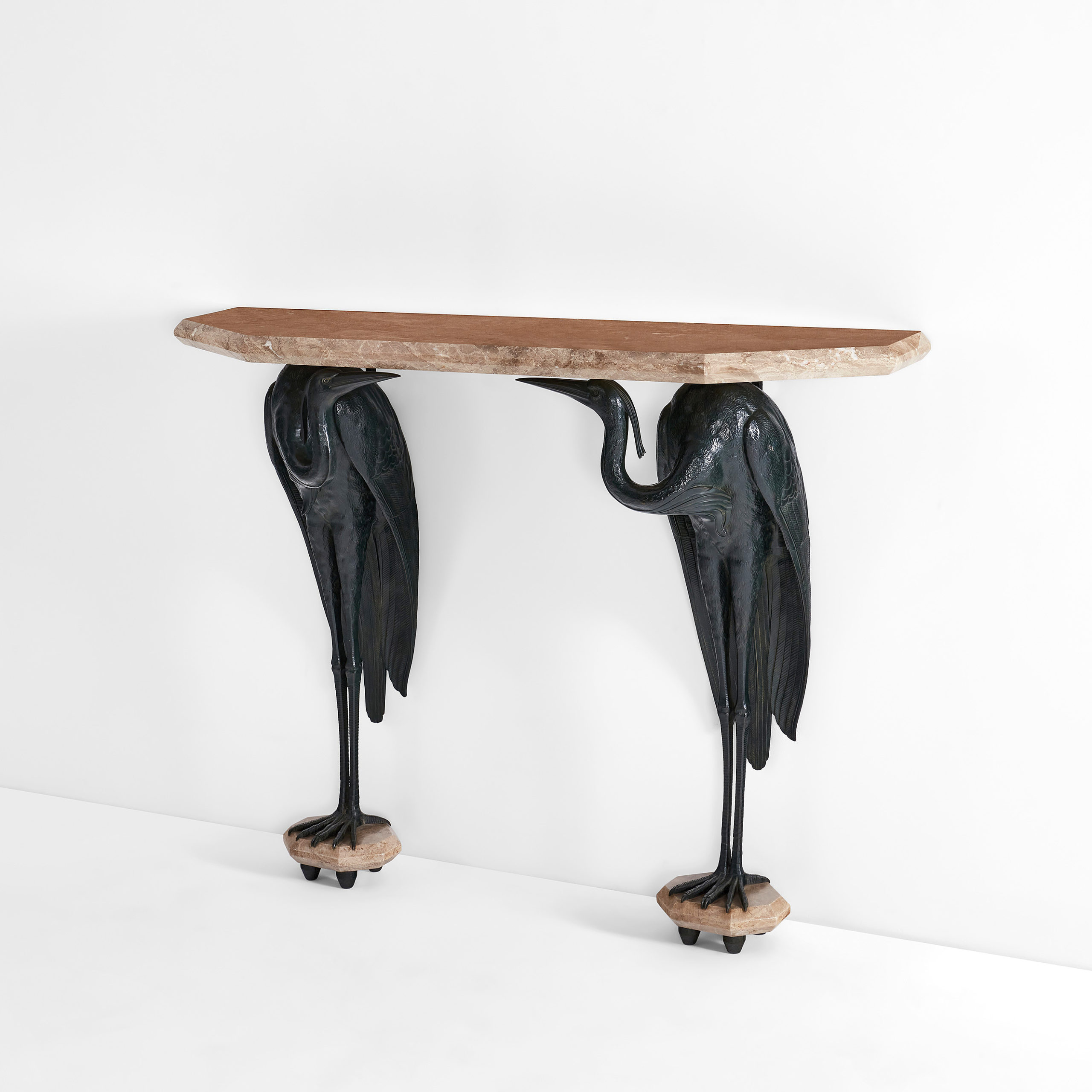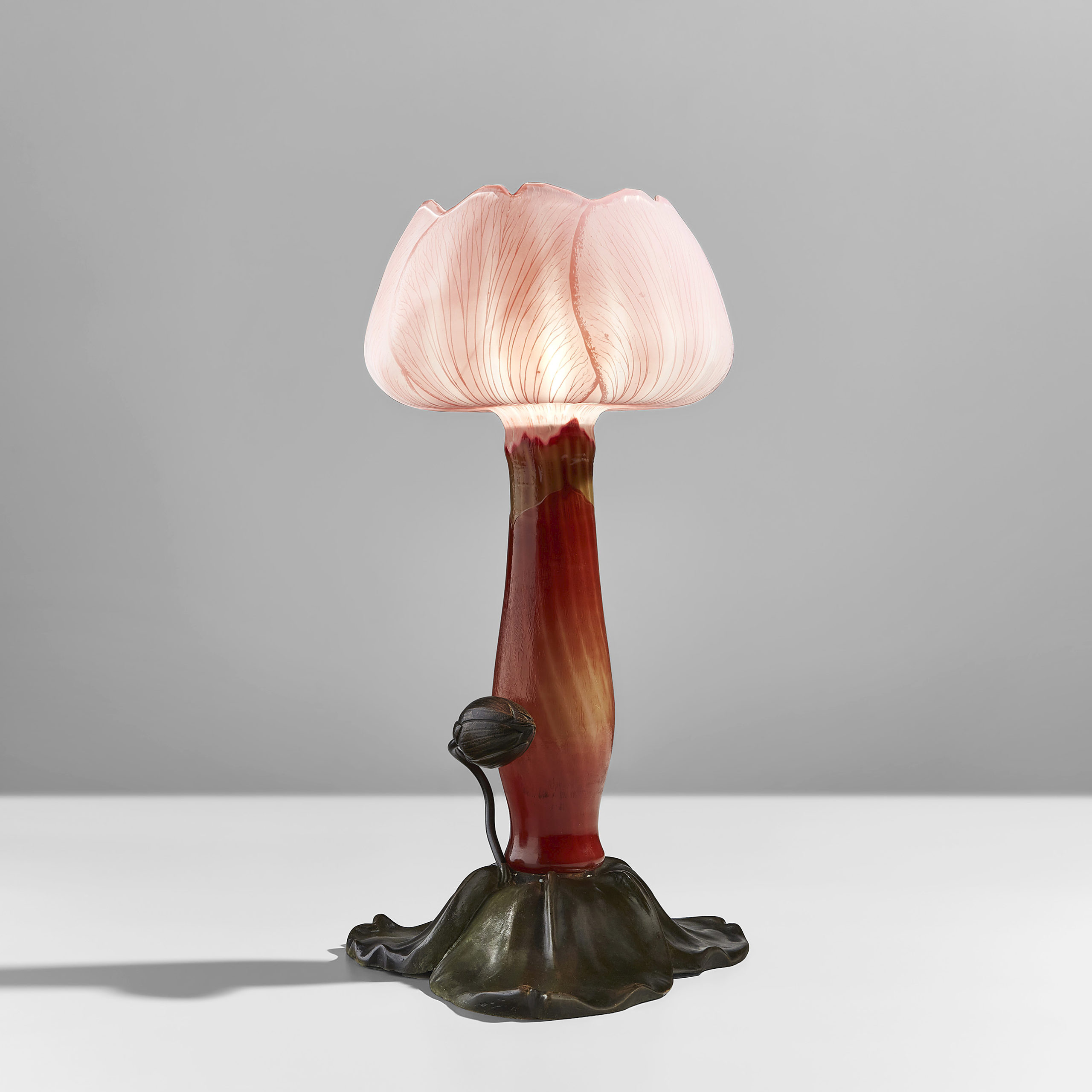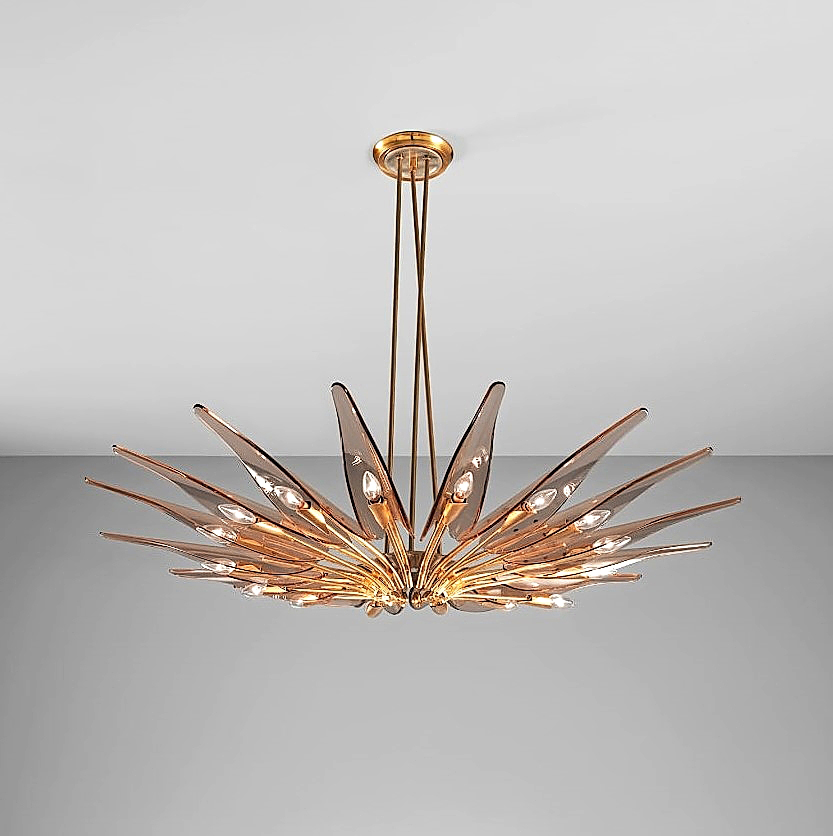
Made in the same year as the 1925 Universal exhibition in Paris, where Albert Cheuret had a booth, this console table of his soared to $215,900.
Review By Z.G. Burnett; Images Courtesy of Phillips
NEW YORK CITY — Phillips’ Design auction on June 8 was a showcase of early Twentieth Century French design, with pieces from important private collections that topped the charts of the $2,577,338 sale. Cordelia Lembo, head of design, New York, said, “Pieces by Albert Cheuret, Émile Gallé, Daum Frères and Louis Majorelle [saw] strong demand from across the globe, with nearly 30 countries participating on the phone, online and in the saleroom at 432 Park Avenue.” Lembo continued, “The results pointed to strong interest in works being shown in a fresh context, as we continue to introduce new designers and collecting categories to our offerings, as well as sustained interest in outstanding examples of Italian, American and Brazilian design.”
Spirited bidding launched Art Deco master Albert Cheuret’s “Heron” console table to $215,900, which led the auction and nearly doubled its estimate. Cheuret (1884-1966) trained under Jacques Perrin and Georges Lemaire at the Ecole des Beaux Arts, Paris, and is known for uniting the stark quality of Art Deco design with the natural forms of birds, flowers and other animals that he favored in his sculpture. This table exemplifies these principles with the rough marble top and supporting bronze patinated herons. It was consigned by a private collector who acquired it from Raymond Toupenet, Paris, in 2007.
Natural forms were popular with bidders, especially those of flora rather than fauna. Second in the sale was a Daum Frères and Louis Majorelle Nénuphar (Water Lily) table lamp, which achieved $152,400. In an essay that accompanied this lot, Dr Margaret J. Schmitz explained, “During an age of rampant industrialization, the Art Nouveau’s references to motifs plucked directly from nature offered respite to those concerned with modernity’s encroachment on all aspects of life… Its sinuous, flowing lines and whip-lash curves radically challenged conventional historicist tastes at the time.” Other versions of this lamp were made, some with different bases, varying colors in the shades and added amphibian decorations.

Émile Gallé Lotus table lamp, circa 1900, more than tripled its high estimate to $101,600.
“We were particularly pleased to see such great enthusiasm for Émile Gallé’s Lotus table lamp, which realized $101,600 against its estimate of $20/30,000,” said Lembo. This was also from a private collection and bought in 2007 from Macklowe Gallery Ltd, New York City. This was followed in price by a Maurice Bouval Chardon table lamp at $82,550 and another Daum and Majorelle table lamp, this time of a Magnolia, that sold for $63,500.
Third in the sale was a rare dining table from Brazilian architect José Zanine Caldas (1919-2001) that achieved $133,350 and exemplified the more natural, fluid forms of his later work. Per the catalog description, “The present dining table is perhaps the most important work by Caldas to come to auction, due to its scale, proportions and impressive provenance. The table was previously owned by Brazilian art dealer Bruno Musatti and his wife, artist Jeanete Musatti [of São Paulo]. The couple visited Caldas’ workshop in Nova Vicosa, Bahia, in 1977 where they picked the perfect fallen tree to be made into the present table. During this visit, the couple stayed as guests at the ‘House of Rio Peruípe,’ Caldas’ home which he designed in 1970. The couple kept this impressive table in their home for 43 years, before it was acquired by the present owner.”

Glass and brass “Dahlia” chandelier, model 1563A, by Max Ingrand and manufactured by Fontana Arte, Milan, Italy, circa 1954, sold for $48,260 against its $25/35,000 estimate.
More typical of American Art Deco style was a pair of obelisk wall lights by Gio Ponti that once hung in his auditorium at the Time & Life Building, New York City. Fresh to the market, these long bronze lights most likely hung in the auditorium’s dining room; similar lamps appear in a 1959 photograph of this space featured in the listing. Brian Kish believed that this discovery shed “new light” on this commission, and explained in his essay, “For the auditorium pavilion Ponti chose the diamond shape as a catalyst to symbolize his particular humanist vision. This allowed him to explore the most diverse typologies, and interconnections within the vast realm of his creative practice, encompassing art, architecture and above all, design.” These lights were exclusively designed for this program, but were distinct from other lighting used in Ponti’s other projects, and sold for $76,200. Louis Majorelle’s La Cascade cabinet followed this; it was constructed of tropical woods such as East Indian rosewood, Macassar ebony, olive wood and lacewood, with delicate mother-of-pearl marquetry. It appears in the June 1899 edition of L’Art Décoratif, in the magazine’s “Salon de 1899” feature, and closed within estimate at $76,200.
Two sets of chairs also found favor with bidders. First was a set of four Semi-Metal chairs, model 305, from Jean Prouvé. As their name suggests, the chairs were made of painted steel and beech-veneered plywood, produced in France between 1950 and 1969. The set achieved $63,500. The second was a set of 12 dining chairs by Claggett Wilson, made of bird’s-eye maple and satinwood-veneered wood with fabric upholstery, commissioned for Sam and Margaret Lewisohn, New York City, circa 1930. This set was bid to $50,800 ($40/60,000).
Chandeliers and ceiling lights accompanied their tabletop counterparts in the upper lots. From a series of residences in Highland Park, Ill., beginning with the Jane and Gerald Gidwitz residence, a ceiling light from Studio B.B.P.R. achieved $60,960. Manufactured by Milanese firm Arteluce, the painted aluminum, steel and glass light was installed at the George Pick House, then owned by the Gidwitz family. Selling at the same price was Jeff Zimmerman’s Vine ceiling light, made with patinated bronze and glass; it was listed as “unique.” A Dahlia chandelier by Max Ingrand and a rare hanging candelabrum by Paavo Tynell also tied in price at $48,260.
Prices are quoted with buyer’s premium as reported by the auction house. Phillips’ online auction, Spotlight: Photographs from a Private London Collection, will be conducted July 7-14. For information, 212-940-1200 or www.phillips.com.




















